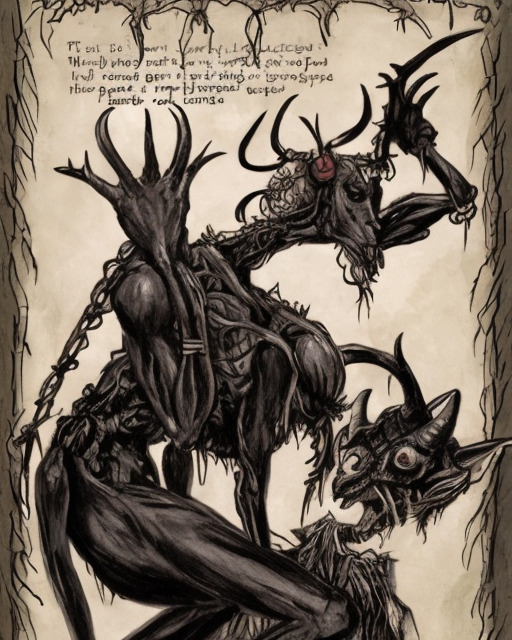#witch hunters
Text
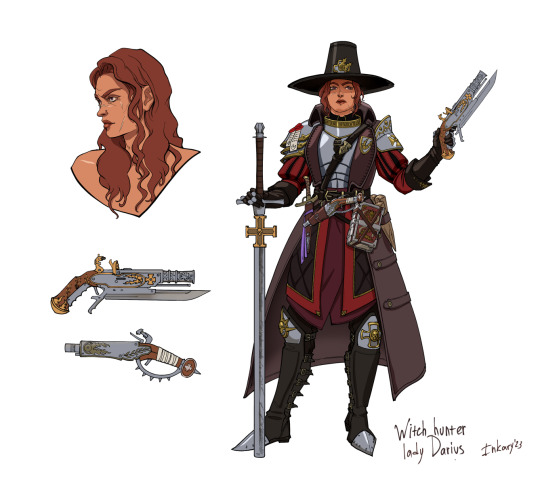
Witch hunter (huntress) Darius
220 notes
·
View notes
Text

Mordheim Rulebook - Witch Hunters Section Illustration by David Gallagher
72 notes
·
View notes
Text
Some of you act like you sucked the hate straight from the grinch’s dick—hop off it, man
#irl harley excerpt#the grinch#grinch#christmas#holiday#merry christmas#happy holidays#the grinch who stole christmas#merry holidays#literally#evil#witch hunters#text post#haha#textpost#humor#lol#original post#funny#shit post#shitpost
23 notes
·
View notes
Text

"A mother is more than just the sum of her children"
Octavia Hale, also known as the Witchfinder, a fake witch hunter from the Hale family, and her two sons: Fabian (youngest son) and Ignatius (oldest son).
Translation of inscriptions: 1) Who poisoned the water? 2) Witch!
___________
Октавия Гайл - самопровозглашённая блюстительница добра, гроза магов, непревзойдённая актриса и первостатейная плутовка. И её дети: старший (справа) - громила-добряк Игнатий и младший (слева) - мрачный Фабий. Может для кого-то они Изувер и Прохвост, но для Октавии - два сыночки-корзиночки, Иги и Прохвостик.
#octavia hale#ignatius hale#fabian hale#witch hunters#novigrad#price of power#gwent#the witcher#witcher fanart#the witcher fanart#the witcher 3#wiedźmin#ведьмак#illustration
14 notes
·
View notes
Text
Spooky season fairytales (1)
I have been covering it these past weeks, and it is a perfect fit for Halloween: Hansel and Gretel.
This is one of the creepiest "popular" fairytales, that has terrified many children. The witch in the gingerbread house not only exemplifies so many bogeymen that caused children's nightmares, but is also one of the two most famous examples of witches in fairytales - and we know Halloween is one of the witchy holidays. And the whole story revolves around a house made of sweets - in modern day interpretations, Hansel and Gretel is THE candy-fairytale. And Halloween is THE holiday for treats and sweets.
Despite being an obvious choice to make fairytale horror movies, and the fairytale having inspired several great horror classics (the scene I posted before in Stephen King's IT involving the witch of Hansel and Gretel), the tale doesn't actually have a lot of treatment in the world of horror... Yeah, it is surprising, but the first true "horror movie" about Hansel and Gretel would be the Korean 2007 movie of the same name, that was recognized as a great Korean horror piece and a very touching tragic story, but is not an actual retelling of "Hansel and Gretel" - or rather it is a twisted, reversed-retelling that mostly uses Hansel and Gretel as a motif and reference rather than actual plot material.
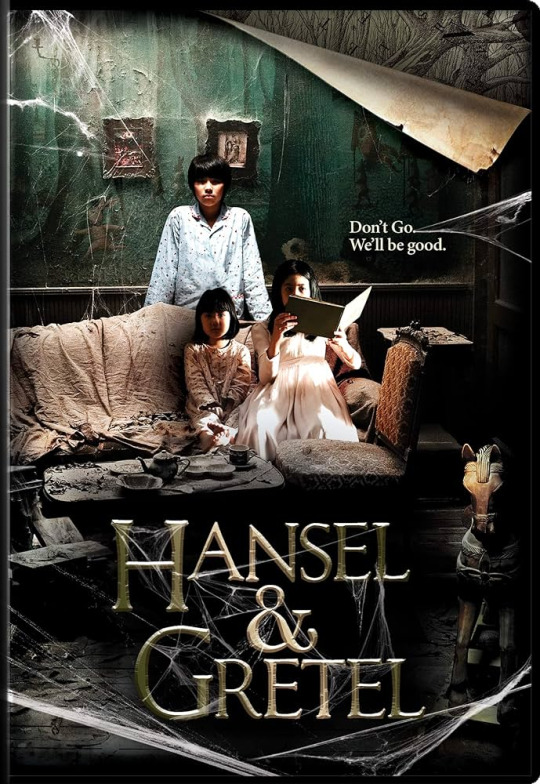
To have "Hansel and Gretel" REALLY enter the horror movie world, we would have to wait for the year 2013, and a dual release. The first one is a famous movie by fairytale enjoyers, that is still quite popular online: "Hansel and Gretel: Witch Hunters". This movie is what the 2005's "Van Helsing" movie was to Dracula.
What to say about this movie? It is a dark fantasy, action-movie acting as a sequel to the original fairytale and depicting the two protagonists as gun-and-arbalet-wielding witch hunters. It is everything you except from a a big studio classic action gritty-fantasy movie. In fact, that's the main flaw of the movie: it is extremely generic, formulaic and "by-the-book". There's no real inventivity or uniqueness in terms of plot, setting or characters. If you played dark fantasy action video games, you watched this movie already. It didn't even invent the concept of Hansel and Gretel as witch hunters - Fables for example had done it already by making Hansel a fanatical Puritan witch hunter in the style of the Salem witch trials. As a result, what could have been a really good, inventive, interestng movie is just... a neutral, generic movie. The kind you can watch and enjoy but that won't transcend anything and isn't groundbreaking in any way.
Not that the movie is bad, it has some highlights and qualities to it that avoid making it bad. For example, several of the actors in this movie are really good and give their best despite playing bland or generic characters (and in fact it sames some flat characters, who are given depth by their actors' work) ; and there is a true visual work, with some fascinating designs. This all makes the movie enjoyable in several aspects - but just having good actors and good visuals won't make the movie good given how generic it is in plot and style, and how incoherent the worldbuilding and the tone feels, tiptoing around anachronisms for the sake of "let's make it cool and steampunk", and failing to find a balance between dark comedy and serious movie. (Oh yes and it also dreadfully suffer from the awful "3D movies" trend of the time)
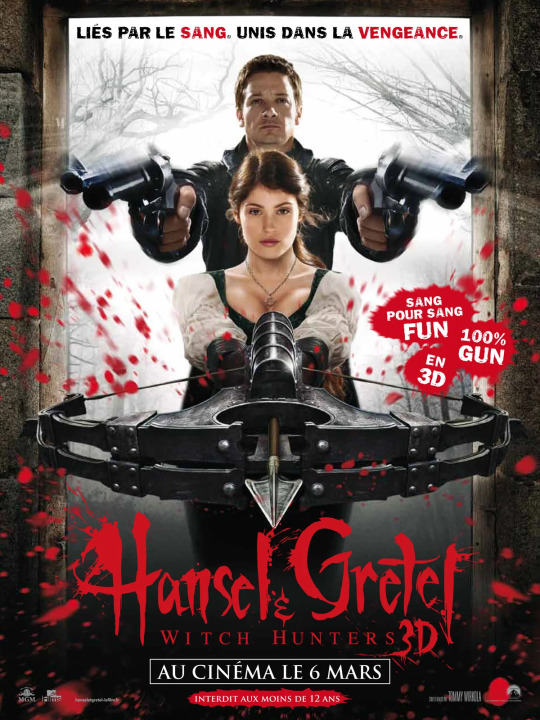
And to this movie answered another movie: 2013's "Hansel and Gretel", aka The Asylum's Hansel and Gretel. A movie which is the perfect twin to "Witch Hunters" - in fact you could say they are the yin and yang to each other.
This movie is a full horror movie, not a dark fantasy/action piece. This movie is a retelling of the original story, not a sequel to it. This movie takes place in modern day, the 21st century, instead of a fantasized Germany of unclear era. And whereas "Witch Hunters" kind of fails at meeting the hype it built up, and is a neutral, average, not-good not-bad big budget movie, this movie is... surprisingly good for what it is, and ends up much better than what it should be.
If you do not know The Asylum, the group behind this movie, they are well-known producers of mockbusters, unofficial sequels and B-movies, and very proud of it. In fact it is their goal: make mockbusters to propose a cheaper alternative to big-studio movies, and turn the making of "second-rate" movies into a true art. They make their movies very fast, they release them against big studios movie they openly took inspiration from, they use cheap special effects, they select for actors either "no-names" or "has-beens"... I think I can sum it up enough by the fact they are the makers of the "Sharknado" movies. As a result, this movie was probably going to be an utter mess and ridiculous schlock...
... But it was surprisingly good. Better than what it should be. Of course The Asylum's marks are still there. The movie opens and closes on two very ridiculous scenes (the first victim's flight in the night ; the explosion of the house), there is some cheap "sexy-horror" audience-appeal (it is no mistake the only victims to be eaten are women that are forced in underwears before being pushed in the oven), and the plot is basically Hansel and Gretel X The Texas Chainsaw Massacre. BUT all that being said, this movie actually works! In its own, small-budget, no-real-ambition way. It doesn't try to be too snobby or arrogant - it knows it is a small, derivative, B-horror movie, and it stays in its lane. There are some interesting scenes and concepts (such as the drugged-colorfed nightmares). They do manage to create some disturbing elements - while also purposefully breaking several horror stereotypes and cliches. They try to keep a "maybe magic, maybe mundane" approach to the story in their own clumsy way but that is interesting. And more importantly - the character of the witch is SO GREAT!
I can't say enough how I enjoyed the witch (Lilith) on screen, and I do believe that this is due to the incredible work of her actress. Because she is played by none other than Dee Wallace (a horror movie regular who began her career with E.T.) - and she manages to make the character entertaining and disturbing. It really works, and I suspect that if a bad actress had been placed there, the role might have felt flat and generic. But she brings extremely well the disturbed state of mind, the humanity of the monster, and the true descent into horrible madness of the character. They are notably the first movie, to my knowledge, which actually acknowledges and reflects upon the special relationship between Gretel and the Witch, invoking elements that would later become common in "Hansel and Gretel" retellings, such as the witch wanting to make Gretel her "heir", or seeing her as a daughter substitute.

Beyond the year 2013, of course, now, you hit "Hansel and Gretel - horror" in any web research system, and you get the recent horror movie by Oz Perkins, the 2020's "Gretel and Hansel".
I do believe that this movie, and The Asylum's movie, truly reflect the two sides of horror movies and how one same story can be treated under these two lenses. The Asylum's is a gory, brutal, low-budget but decent and interesting horror movie, that still works in its limitations and intends to be just your random "fun little horror slasher movie" ; this movie is the artistic, big-budget, much more stylized and psychological disturbing horror movie that veers more into dark fantasy sometimes and tries more to be an actual nightmare, in the most abstract and eerie sense.
Personally, I did enjoy the movie as a whole and I think it is a good Hansel and Gretel movie. I do think they did a good job at mixing the fairytale with the entire Christian myth of the witch as built by the witch-hunts and other countryside superstitions (they weaved in the story for example the topics of the magical ointments and the idea of witches feasting on the dead) ; and I did love the dark twists and reveals at the end ; and I also liked very much the subtle references to other fairytales slid in the story (Little Red Riding Hood, and The Juniper Tree).
However it is not a movie without flaws - and I would never call it a perfect movie. It got the ideas, the visuals, the will, the inspirations, but... sometimes it does too much, there's unecessary things that could have been cut out and do ridiculize a bit the movie (the first third of the movie is filled with unecessary and random moments like the bizarre hostile man in the abandoned house, or the "mushroom" scenes, which clearly were not needed - there's also jumpscares that are just... there, for jumpscare sakes, when this movie clearly does NOT need jumpscares). There is also the fact that while often it manages to drive its themes, messages and topics in subtle or clever ways (the dialogues of Gretel and the witch, about things such as power, womanhood, the world, are all very well done), a few times it becomes suddenly very clumsy and awkward (one particular moment was the line of Gretel about "the system" in her very first scene, which felt definitively too political and modern to fit in the context).
I do remember the so-called "debate" there was when this movie was released, and the so-called "scandal" of putting Gretel's name first. But it makes full sense when you understand that Gretel here is the main character, that we are told the story through her, and that it doesn't try so much to be a Hansel and Gretel retelling, as rather a dark and morbid fantasy movie that uses the Hansel and Gretel tale as a driving plot to explore more things - the European witchcraft myth, the theme of "Faustian deals", etc, etc... And despite some clumsiness here and there that do flaw the movie (I haven't mentionned it, but the choice of the tattoos for the witch's "final" form seemed very random and ill-thought, which is one of the several little details that don't work ; balanced by details that do work, such as the idea of having a more modern architecture for the witch's house), it still works for most of its course.
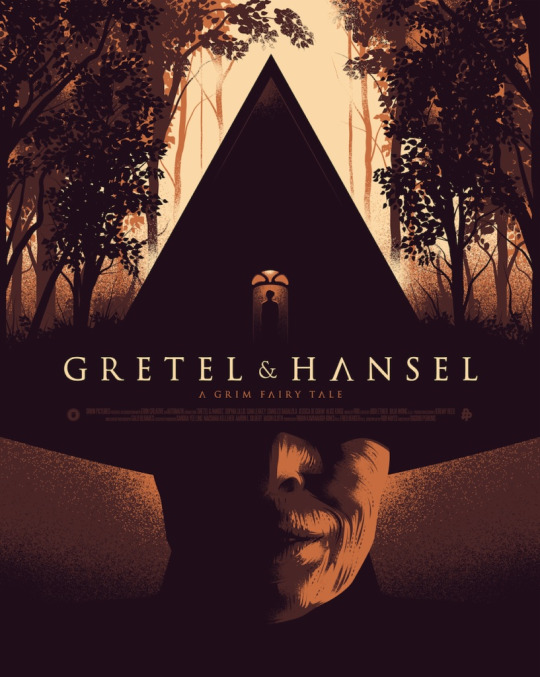
To conclude this post, I need to talk about one last "Hansel and Gretel" movie. A movie which American audiences are not actually familiar with. Because it is a German movie, that got released around Europe (I saw it in French), but to my knowledge never crossed the Atlantic. Made by Anne Wild and written by Peter Schwindt, this movie is probably the eeriest Hansel and Gretel adaptation I have seen. It is not "disturbing", "shocking" or "horrifying" - it is just creepy and unsettling. It is not a rewrite or a "retelling" per se, because it stays faithful to the original tale and barely changes anything. Out of the five movies I present you, this is the most faithful movie when it comes to adapting the brothers Grimm fairytale.
EDIT: I originally wrote this part thinking the movie was very hard to find... TURNS OUT IT WAS POSTED ON YOUTUBE! The full movie is on Youtube - in its original German though
This movie made the fairytale eerie with two things. 1) Little unsettling and creepy details in terms of style and movie editing. This movie actually has several things in common with the 2020's Gretel and Hansel - such as the heavy use of the forested landscape to make one feel both lost and trapped at the same time (helped by the fact the protagonists are here played by actual children), and bizarre camera angles and movements (including disturbing close-ups and brutal cuts). The score also includes eerie songs and creepy children whispers, that add to the general spookyness. 2) A work on the realism on the tale. There's still magic and supernatural in there, definitively. But overall it is all... "realistic" in style, making it all more unsettling. Hansel and Gretel behave like actual children - and are in fact often unaware of the danger they are getting themselves into. The color palette is drab and lightless.
Don't get me wrong: this is not an adult-aimed movie, it is not a horror movie. It is still a kid-oriented, fairytale movie, with some moments of humor (though it is mostly dark humor, such as Hansel, blissfully unaware of the witch's plan, coming to enjoy his life in a cage eating good food all day long), a happy ending, and many beautiful visuals (the witch's bedroom is especially interesting - slight spoiler but there is the beautiful visual of the witch keeping petrified birds and butterflies in her room, that come back to life once she is dead). It has poetry to it - but it is definitively not a Disney movie and not what we usually think of as "fairytale movie for kids". It is a quite dark one.
One good illustration of this would be the family dynamic at the start of the tale, and how this movie slightly changes the whole abandonment episode. In this movie, the character of the mother is actually sick - and having her suffering from what will be a deadly disease puts her entire character into a very different light. Another major change they did is that the second time the children are abandoned - the parents do not hide the fact they are abandoning them. Hansel and Gretel know it, and the parents don't bother lying or even pretending, but there is still this sort of untold shame as they don't openly admit it and flee from their crying children... It hits hard.
The creepiest part of the whole movie is however, without a doubt, the witch. By gosh, this is one of the creepiest incarnations of the character I saw. She is a perfect embodiment of the uncanny valley: she is not some cartoonish monster, she is just this pale middle-aged woman that never blinks. She does perform magic, but her magic keeps with the "realism" style of the movie - no flash, no music, no smoke. When she teleports, she is just here one moment, another the next. She prevents Gretel from leaving by casting a spell that makes it so that each time she walks away, she ends up finding herself in front of the house - despite it being impossible. Her rhyming "Who's nibbling on my house?" is actually a disembodied whisper in the ears of the children as they see nobody, making their answer "It's just the wind" an actual comforting sentence they say to themselves thinking they imagined it all. Her bedroom cannot actually exist because it is located in an impossible part of the house that does not appear from the outside. And there are those little details that do hint at her maybe not being actually human but just looking like a human - when she moves sometimes her bones crack, and other times her voice seems to double itself in a strange echo... And when she is pushed into the oven (light spoilers too) - she doesn't scream. She doesn't make a sound. Once she is pushed and the door is closed, it is dead silence, and that makes it even more disturbing than if she actually screamed in agony.
And there are other little morbid details in the movie - too many for me too count. But one thing that does stick with me was the way Gretel pieced up together the witch's real intentions for Hansel (because of course she didn't tell them she was going to eat them), by noticing little details straight out of Pan's Labyrinth - such as Gretel noticing the witch's wind-chimes is made of bones and hair ; and the witch keeping in her house a closet filled with an ungodly amount of toys in various states of aging. This latter detail was notably taken back by "Gretel and Hansel", where the first hint of the witch's previous victims are toys scattered in the wilderness around the house. In fact, I do wonder if Perkins didn't take some inspiration from this 2005 movie, because there is definitively something similar between the two.
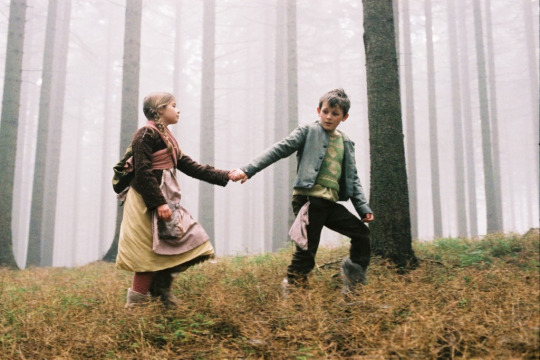
And with this, you have to my knowledge the perfect Hansel and Gretel movies for the spooky season.
The supernatural tragedy inspired by, and a famed piece of Korean horror. The surprisingly good B-horror movie that turns the story into a new "The Texas Chainsaw Massacre". The dark fantasy action-packed blockbuster that is just halfway there. The recent, heavily stylized, witch-hunt inspired artsy/socio-political horror movie. And the eerie, unsettling, faithful retelling as a dark German children movie.
#spooky season fairytales#spooky season#fairytale movies#hansel and gretel#dark fairytales#fairytale horror#horror fairytales#gretel and hansel#witch hunters
27 notes
·
View notes
Text
3rd edition Witch Hunters codex
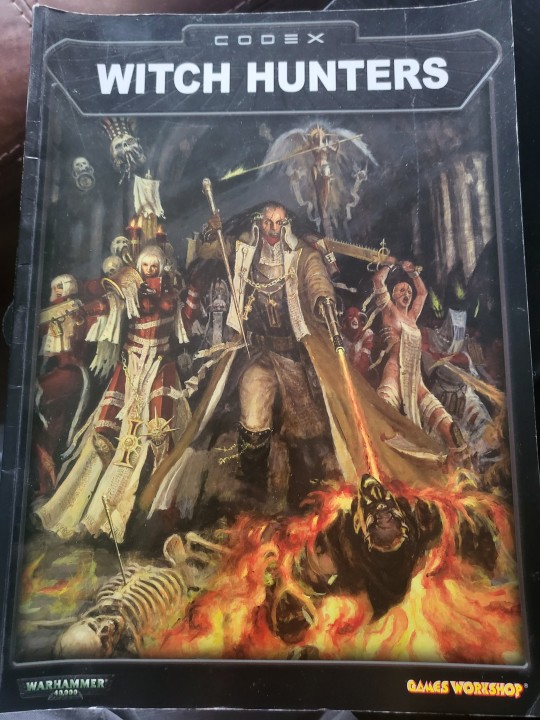
So I've recently gotten my hands on a load of codexes and Imperial Armour books from previous editions. I have to say that these codexes are just fantastic. Particularly the Chaos Space Marines, Daemonhunters and Witch Hunters codexes. In the Witch Hunters, they had rules for a full Sisters of Battle army as well as Inquisitors and Adversaries.
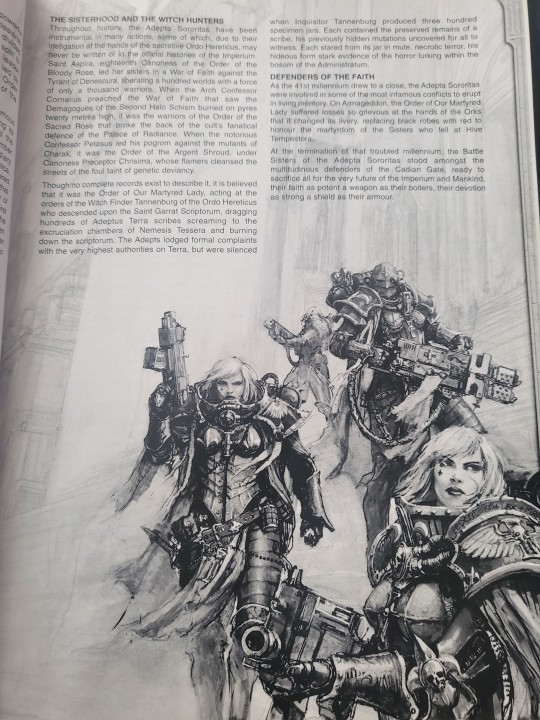
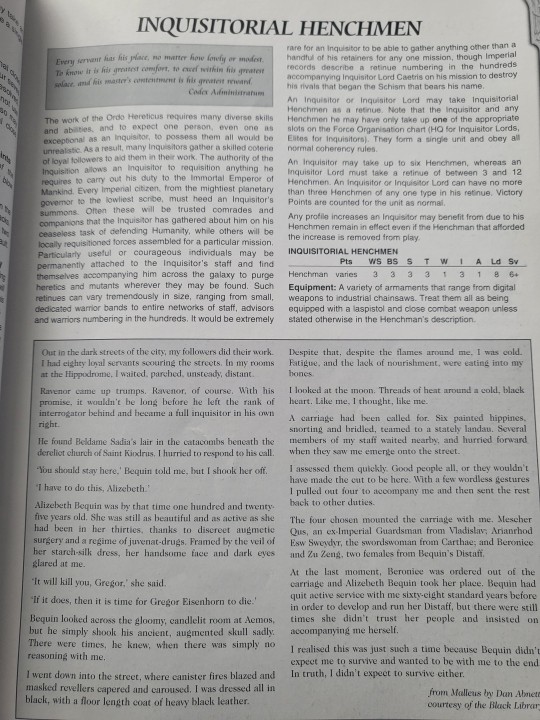
Sisters and Inquisitorial Henchmen? Yes please.

Pages of wargear options

Lord Inquisitors are just so fun to build

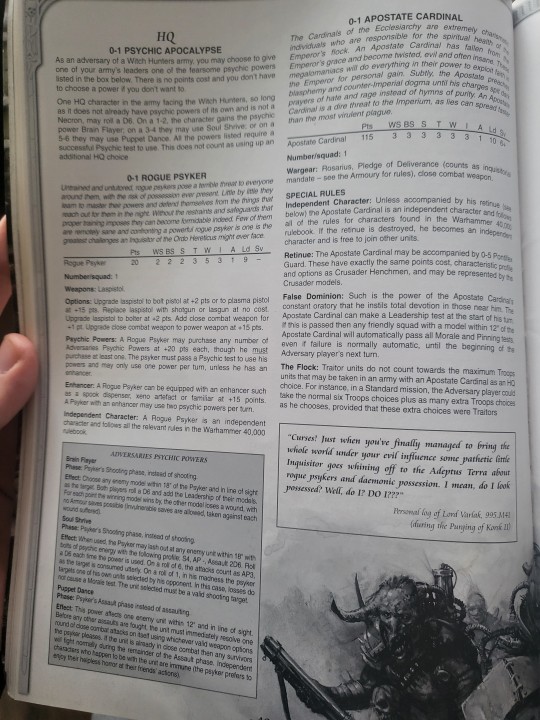
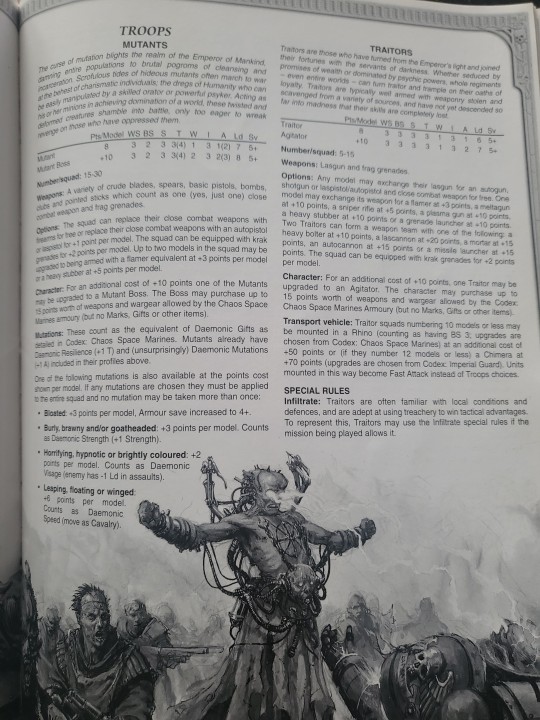
Here's what to add for some flavour to your games. ROGUE PSYKERS AND APOSTATE CARDINALS. Oh wait there's more...


How about some narrative suggestions as to why the Witch Hunters are fighting various factions!
#warhammer#warhammer 40k#warhammer 40000#w40k#40k#witch hunters#sisters of battle#adeptus sororitas#ordo hereticus#inquisitors#lord inquisitor#adversaries#rogue psykers#rogue psyker#3rd edition
66 notes
·
View notes
Text
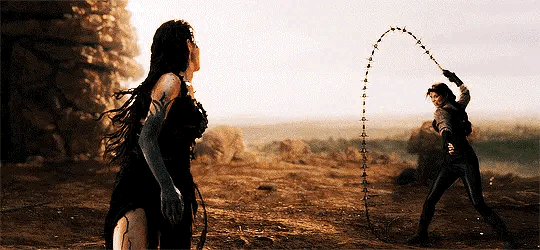
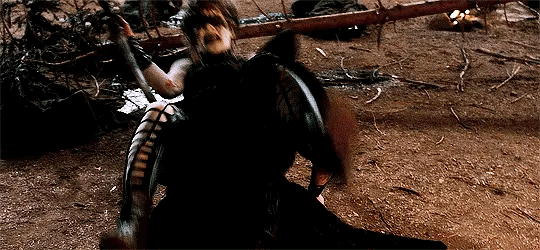


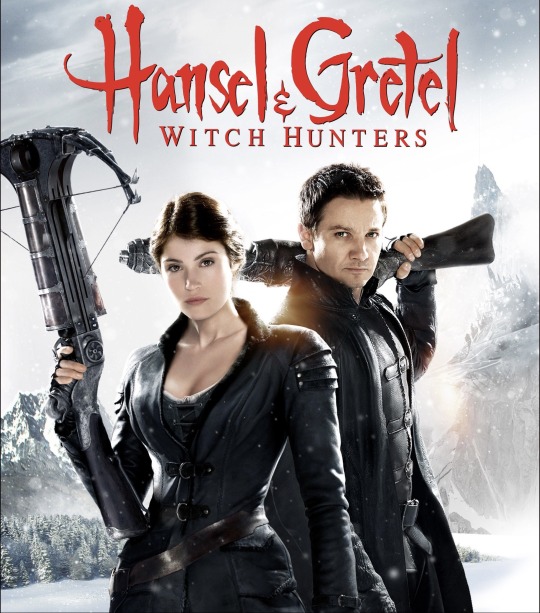
The hellaciously fun action/horror hybrid ‘Hansel & Gretel: Witch Hunters’ hit theaters this week 10 years ago. 🍬🧙🏼♀️☠️
“𝚆𝚑𝚊𝚝𝚎𝚟𝚎𝚛 𝚢𝚘𝚞 𝚍𝚘, 𝚍𝚘𝚗'𝚝 𝚎𝚊𝚝 𝚝𝚑𝚎 𝚏*𝚌𝚔𝚒𝚗' 𝚌𝚊𝚗𝚍𝚢.”
#otd#2013#10#movies#horror#comedy#fairy tale#hansel and gretel#witch hunters#gemma arterton#jeremy renner#peter stormare#famke janssen#tommy wirkola#pihla viitala#derek mears#robin atkin downes#ingrid boslo berdal#joanna kulig#thomas mann#Rainer Rock#grimms fairy tales#Spotify
64 notes
·
View notes
Text
Work in progress
When ur BFF who ur low key obsessed with dies in battle so u decide to gut a vampire to feed him their blood so he comes back to you
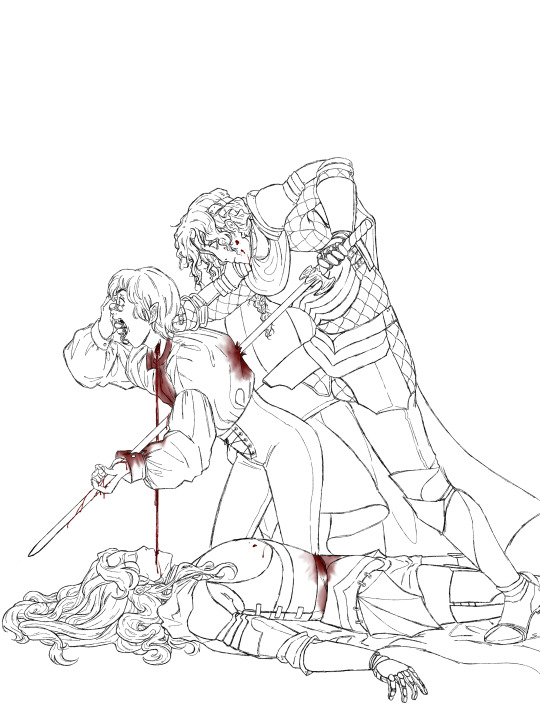
#My art#Oc art#Sâmua Sarangaka#Jeanne Hudaya#Original characters#Vampires#Knights#Witch hunters#Cause they are kinda witch hunters explaining the lore be weird but whatever#I love how Jeanne looks he's positively insane#He's lost his marbles#He's the one gutting the vamp btw#Also yes Sâmua is the dead beauty#Vampire is unnamed he's Canon fodder#I wuv them so much I can't wait to write this scene when I have time ehhehe#Wip#My ocs
14 notes
·
View notes
Text
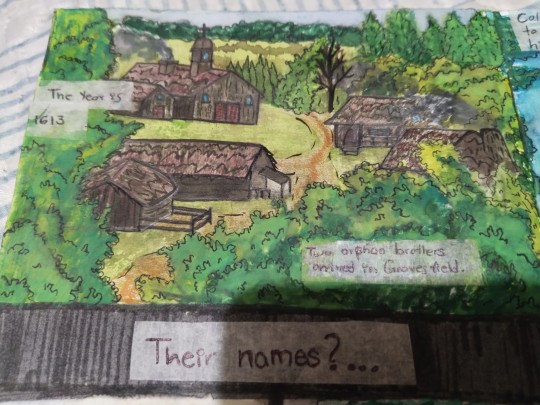
Working on something 🫣
14 notes
·
View notes
Text


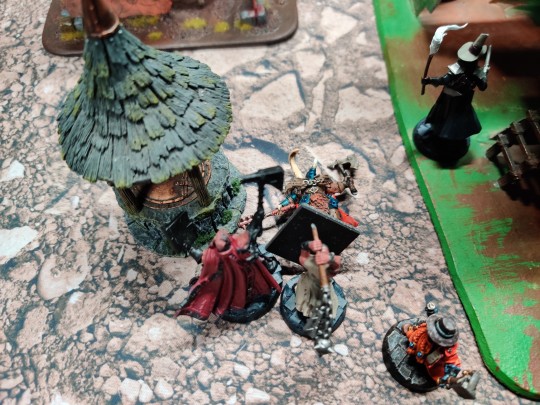
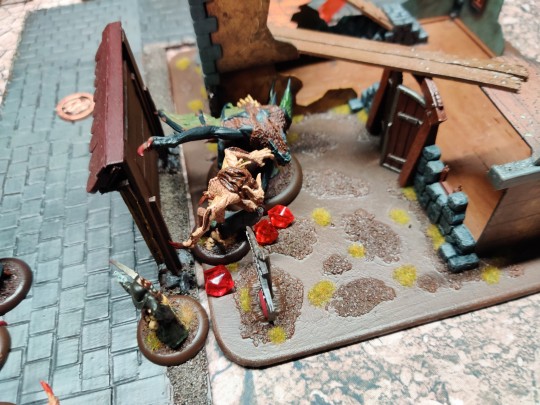


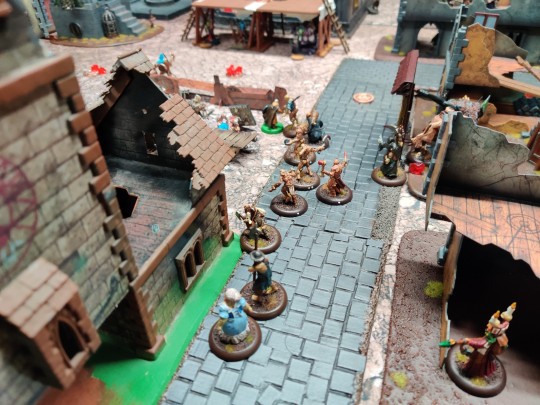


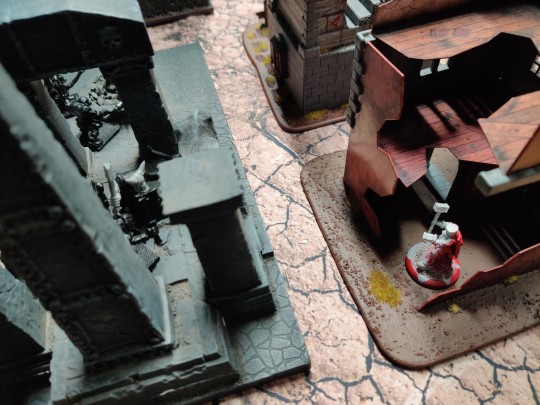
AMassive 6 player multi-battle at the epic end of our Mordheim Campaign! Carnival of Chaos is performing Dance for the Plague God and burning Wyrdstone, other warbands are there to stop the festival, gain wyrdstone or some other alternative goal.
#the274#mordheim#witch hunters#carnival of chaos#warhammer#sisters of sigmar#the undead#ork warband#miniatures
8 notes
·
View notes
Text
Seasonal theme: Magical summer (ending)
This summer will be a season of wonders and enchantments, of spells and wizards - a magical summer!
Here is a list of beings, entities, objects and concepts you can check out if you want to add some magic to your summer:
In fiction (but isn’t fiction a myth-to-be?)
Shakespeare’s work greatly influenced the world’s vision of witches and wizards, be it through the Weird Sisters/Three Witches in Macbeth, or Prospero in The Tempest.
The Sorcerer’s Apprentice is one of the most famous pieces of “wizard fiction”. Starting out as a German poem by Goethe, adapted from a world-wide folktale, it then became a French “symphonic poem” in the hands of Paul Dukas. Disney then adapted this symphonic poem into a world-famous animated short in their movie Fantasia 2000, before re-adapting the poem into a completely unrelate teenage-urban fantasy movie in 2010. A urban fantasy movie not to be confused with another kid-friendly fantasy movie inspired by the poem of Goethe and sharing the same name (as well as plot elements, such as Arthurian sorcerers finding themselves in the present-day world). This time it is a British “The Sorcerer’s Apprentice”, released in 2001.
The depiction of Merlin in The Sword in the Stone, both the Disney movie of the 60s and the novel by T. H. White that inspired it, also had a great impact on the vision of the character in popular culture. Both works also contain a famous fictional witch in the person of Madame Mim. A warning, however: Madame Mim only appears in the first editions/first version of the novel, on which the Disney movie was based. In the 50s White rewrote his novel, and excluded the chapter of Madame Mim. Madame Mim in the novel is also very different from the character Disney made her out to be.
A last creation of Disney for this list: Flora, Fauna and Merryweather, the three good fairies (and actual heroes) of Disney’s Sleeping Beauty.
The Wicked Witch of the West is one of the most famous depictions of a “wicked witch” in the mediatic landscape - and in fact, many witch depictions today are still inspired by her (most notably the green skin or the fact of being melted by water). I am of course here referring to the Wicked Witch as she appears in the MGM movie The Wizard of Oz - this Witch being a very different character from the Wicked Witch of the West appearing in the original novel by L. Frank Baum, The Wonderful Wizard of Oz. Not that Baum did not create quite a lot of very famous witches: I can mention Mombi, the antagonist of the second Oz book, The Marvelous Land of Oz, or the Good Witch of the North and her counterpart Glinda the Good, the Sorceress of the South. These two are quite notorious as being the first “good witches” to ever appear in American literature.
In Tolkien’s Legendarium (The Hobbit, The Lord of the Rings, the Silmarillion): Gandalf the Grey, Saruman the White and the Rings of Power - especially the One Ring. All became archetypes of the fantasy literature and unchallenged character-types (or artefact-types) in all future high fantasy/epic fantasy sagas. Plus - I almost forgot - the palantiri, the “seeing-stones”, Tolkien’s own spin on the classical “crystal ball”.
Other wizards of fantasy classics would include Belgarath the sorcerer and his daughter Polgara, from David Eddings’ (and his wife) The Belgariad, a duo purposefully designed to play fully while subverting in many ways the “Gandalf-type of character” ; as well as Ningauble of the Seven Eyes and Sheelba of the Eyeless Face, the alien and otherwordly patron-warlocks of Fritz Leiber’s iconic heroic duo, Fafhrd and the Gray Mouser.
The magic-users of sir Terry Pratchett’s Discworld deserve an entire section of their own. Each one of them is a careful parody or caricature of the wizard or the witch as envisioned and imagined by fantasy literature, witch-hunters or New Age hippies, as well as a reconstruction of these same stereotypes and cliches, based on philosophical, humanist and scientific principles, making them as much realistic takes as bloody hilarious incarnation of the “witch” and “wizard” character types. For the wizards you have Rincewind (with the Luggage, of course), Mustrum Ridcully, Ponder Stibbons or the Unseen University (a wizard school long before Harry Potter existed). For the witches you have Granny Weatherwax, Nanny Ogg, Magrat Garlick or Tiffany Aching. And let’s not forget the gender-challenging Eskarina...
Speaking of Harry Potter - despite the controversies surrounding its creator, the Harry Potter book series, and the movie series that followed, is a franchise that cannot be ignored when considering the image and perception of witches, wizards and magic in fantasy. The titular character of Harry Potter deeply marked the minds - as much as his two friends/co-protagonists, Ron Weasley and Hermione Granger, his nemesis Draco Malfoy, his mentor/school headmaster Albus Dumbledore, the magic school of Hogswart itself, or the magical sport known as Quidditch.
However, while Harry Potter cannot be ignored, it also must not be forgotten that this franchise was the last of a long set of series depicting children trying to learn magic in a school for witches or wizards, such as Wizard’s Hall by Jane Yolen, The Circle of Magic by MacDonald and Doyle*, Anthony Horowitz’s Groosham Grange (plus its sequel “The Unholy Grail”), and of course Jill Murphy’s The Worst Witch. Special mention for Neil Gaiman’s The Books of Magic, which do not feature a magic school, but are about a young British boy looking a lot like Harry Potter and training to become the greatest wizard of his era - and that despite being a story released seven years before Harry Potter. [* Again, to avoid confusion, this series is not the same as Tamora Pierce’s Circle of Magic, which ALSO deals with young wizards learning to control their powers - but this time was released in parallel to the Harry Potter series].
In a similar way, Harry Potter himself is the last of a long “bloodline” (inkline? Since they’re literary character) of fantasy series-protagonist that start out as young teenagers or kids, become sorcerer apprentice or wizards in training, and grow to be famous and heroic figures of the world of magic. Before Harry there was Pug, of the Riftwar Saga (later expanded into the Riftwar Cycle), and before Pug there was Ged from the Earthsea series.
While I do not usually include in those list too-recent works, because I brought up Harry Potter I am in the obligation to mention two big recent successes. On one side, the Japanese anime Mashle: Magic and Muscles, which is a very funny parody of the Harry Potter world, if it met the tropes and characters typical of recent seinen superhero mangas, such as One-Punch Man or My Hero Academia. On the other side, the American cartoon The Owl House, which gently mocks the problems inherent to the Harry Potter franchise, while offering its own alternate plotline about a teenager trying to learn magic in a world divided between “regular” humans and magical witches, only to be confronted with great evil powers beyond what she could imagine...
Two very different dreaded witches: on one side, The Lady from The Black Company, wife and former co-ruler of the dreaded sorcerous overlord The Dominator, and absolute mistress of the Ten Who Were Taken, vile wizards including some terrifying folks such as Soulcatcher, Shapeshifter, The Limper, The Howler or the Hanged Man... On the other, the witch-queen of Neil Gaiman’s Stardust, one of the three Lilim sisters of a fairy-land beyond a certain Wall... She was reinvented as the witch Lamia in the movie adaptation of the novel. I will also throw in another dreaded female magical entity invented by Neil Gaiman: The Other Mother, from Coraline - who is, after all, at one point called a “beldam”...
Not a book, not a movie, but a card game! The card game Magic: The Gathering deserves a mention, being one of the first and most famous collectable strategy card games, long before Japan overtook with the world with Yu-Gi-Oh, Duel Master and co. The original concept for the game was that each player embodied a wizard fighting another wizard, eac card being a different spell/magical artefact/summoned entity, and each deck was a grimoire/spellbook. The most notorious part of the game is its color system: the Five Colors, representing the various elements and energies of the multiverse, gathered in five different forms of magic forces/divine powers/philosophico-social ideologies. The White of light, peace, law and order. The Black of death, rot, sacrifice, greed and selfishness. The Red of chaos, fury, impulses, emotions, freedom and war. The Blue of intellect, knowledge, logic, deceit, trickery and illusions. The Green of life, nature, evolution and tradition.
To continue on the topic of games. For tabletop roleplaying games - Warhammer, the most famous dark fantasy RPG, whose wizards are divided by the Winds of Magic, the different types of magic powers: Aqshy the Red Wind of Fire, Chamon the Yellow Wind of Metal, Hysh the White Wind of Light, Ulgu the Grey Wind of Shadow, Azyr the Blue Wind of Heavens, Ghur the Brown Wind of Beasts, Ghyran the Green Wind of Life, and Shyish the Purple Wind of Death. For online, virtual roleplaying game, World of Warcraft, the most famous fantasy MMORPG to this day, with its character class of the Mage (sometimes called Wizard), a spellcaster and conjurer who can specialize in three “types” of magic: Frost magic, Fire magic and Arcane magic. They are not to be confused with the other magic-using classes of the game, such as the Shamans (totemic mystics invoking the spirits of their ancestors and manipulating the four elements), the Warlocks (curse-wielding summoners and enslavers of demons), or the Druids (healers, spellcasters and shapeshifters taking their power from nature itself, and celestial bodies such as the sun and the moon).
A few fantasy series centered around magic I heard about positively but haven’t had time to check out myself. Diana Wynne Jones’ Magids duology, with on one side Deep Secret, and on the other The Merlin Conspiracy. Angie Sage’s Septimus Heap series (especially the first book, Magyk, which I heard the most about). And Trudi Canavan’s Black Magician Trilogy.
Being a huge Deltora Quest fan, I will mention as a magical artefact the Belt of Deltora and its seven magical gems.
We have spent so much time talking about witches... But what about witch hunters? I will name two famous examples here. On one side, Solomon Kane, hunter and slaughterer of all things evils, eldritch and unholy, one of the two famous creations of Robert E. Howard alongside Conan the Barbarian, and whose adventures (just like those of Conan) are technically part of the Cthulhu mythos. On the other side, the Wardstone Chronicles, a brilliant little dark fantasy series for young adults, about the seventh son of a seventh son in a fictional version of Renaissance England learning to become a “Spook”, aka a hunter of ghosts, witches, goblins, demons and other evil gods.
Of course, being French I have to sprinkle a few French references in this list. For the foolish, cartoonish-evil sorcerer of children fiction: the evil alchemist/sorcerer Gargamel, the recurring and iconic antagonist of the comic-book, then turned cartoon, then turned hybrid movies, The Smurfs. For an evil but glorious wicked lady of dark magic, Karaba the witch from Michel Ocelot’s most famous animated movie Kirikou and the Sorceress, inspired by a traditional folktale of West Africa. For your classic Gandalf-like fantasy wizard: Zétide, the elderly but powerful wizard who serves as one of the protagonist of the fantasy series La Malerune, initially created by Pierre Grimbert but completed by Michel Robert. For your young adult fantasy hero: Ewilan, from the teenage fantasy series The Quest of Ewilan, an ordinary young girl discovering herself to be the true daughter of powerful sorcerers of another world, another world she will need to save with her own hidden magical powers. And to add a final “French touch”, the witch of Malcombe and Eusaebius the mage, the two magic-users whose actions start the plot of one of France’s most famous comedies, Les Visiteurs.
The French television series Kaamelott deserves an entire section, with its hilarious cast caricaturing the Arthurian mythos from beginning to end - from an inept and incompetent Merlin, to an annoying Lady of the Lake whose ghostly apparitions make everyone believe Arthur is mad, passing by a Morgan le Fay who is tired of constantly having to drag heroes’ corpses back to Avalon. And let’s not forget Le Répurgateur, a cruel, fanatical and overzealous inquisitor and witch-hunter of the early Christian Rome, who however carries numerous modern-day values and norms against the Celtic traditions still honored at Camelot (such as polygamy or a very loose definition of “justice”).
ADDENDUM:
I forgot to put in two items on the first part of this list, so I will add them here as a final conclusion.
When talking about the fairytales of the brothers Grimm that popularized some witch archetypes (Little Snow-White, or Hansel and Gretel), I forgot to evoke The Frog King (wrongly remembered today as “The Frog Prince”), which was the fairytale from which derives the cliche/stereotype/trope of a witch or a fairy turning anyone that displeases them into a toad or a frog.
And of course, I forgot to mention the most “real” of all the magics... The stage magic. The magic tricks of the magician with the top hat and black-and-white wand. The parlor tricks, and stage illusions, and children’s entertainment, and the great magicians that practiced this art: Isaac Fawkes, Robert-Houdin, John Henry Anderson, Herrmann the Great, Houdini, Harry Blackstone, Fred Kaps, and many many more... Pulling rabbits out of hats, changing the numbers and figures of card games, cutting ladies into two, pulling flowers or handkerchiefs out of thin air, and all these sorts of things...
#magical summer#seasonal theme#magic#wizard#witches#witch#sorcerer#fantasy#literature#magician#dark fantasy#children literature#arthuriana#fairies#disney#tolkien#neil gaiman#french media#witch hunters#magic system#wizard school#discorld#harry potter#epic fantasy#shakespeare
17 notes
·
View notes
Text
2 notes
·
View notes
Text
shoutout o the Dadrius server for letting me ramble about the correct history and common misconceptions of the witch hunting era while im writing my midterm and then talking about how since leaning about it in class my perception of Belos has changed just a bit lol
43 notes
·
View notes
Text


The sad backstory of Octavia Hale and her sons, Fabian and Ignatius.
#octavia hale#ignatius hale#fabian hale#gwent#the witcher#witcher fanart#the witcher 3#the witcher fanart#wiedźmin#ведьмак#price of power#novigrad#witch hunters
11 notes
·
View notes
Photo
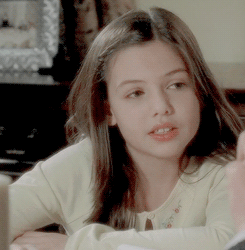
(via GIFER)
8 notes
·
View notes
